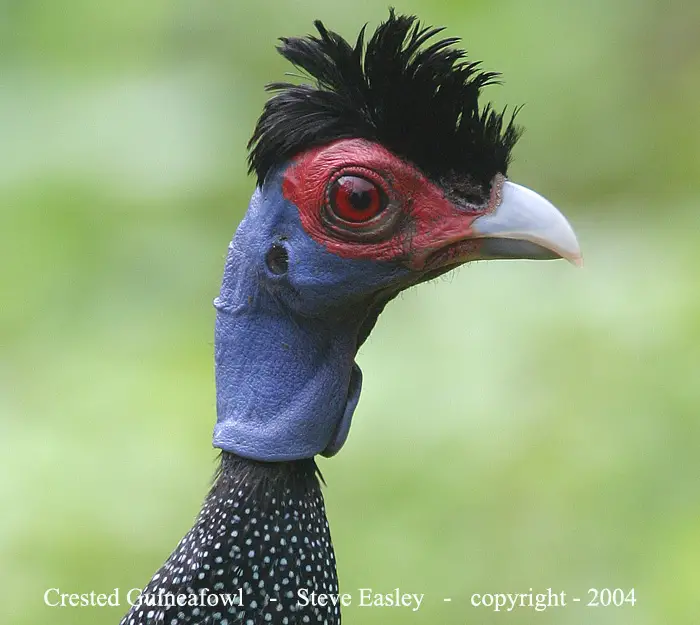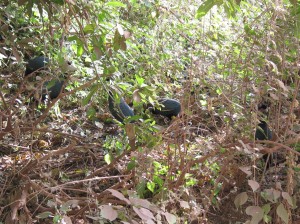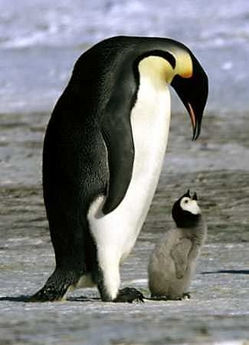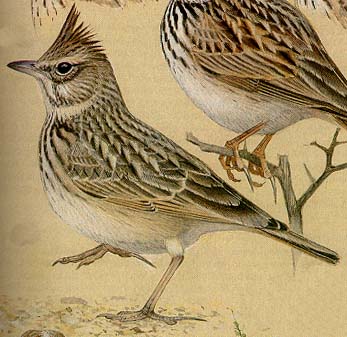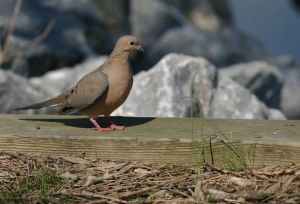Crested Guineafowl
Crested Guineafowl obtained its name by the curly taft of hair on its head. These guineafowls have a somewhat unatractive looks but apart from their appearance, they’re quite ordinary birds. They inhabit central parts of Africa, ranging throughout all the forest territories, as well as a handful of regions in Southern Africa.
Crested Guineafowls have dark blue feathers with many regular white markings. The head is bare and the skin on it dry and somewhat rugose. This, combined with the bright, blood-red eyes give for the rather demonic look of the birds. Interestingly, an Ancient Greek myth tells a story why guineafowls have white markings on their plumage – two women were turned into pacocks, and when they found out about their brother’s death, their tears dyed parts of their plumage white.
These guineafowls live in forest meadows and thick bushy areas. They are social birds that live in groups of 10-30 individuals and in these larger groups, families stick together all the time. Early morning, the Crested Guineafowls leave their tree beds and go to the forest to feed. When the temperature becomes too warm, the birds hide in shadow or sometimes go swimming to cool off. Individuals of the group communicate constantly, using their loud voices and staying in close range of each other.
Although these birds seem to be very noticeable, they blend in with their surroundings very well. If during feeding a threat poses, one of the birds stretches out their neck and emits a very loud and shrill scream. Upon hearing it, all the other guineafowls fly to the trees, where thanks to their great camouflage, they’re invisible for the predator’s eye.
Crested Guineafowl’s diet consists mostly of seeds and fruit, althoug they also eat other parts of plants. Occasionally they feed on bugs, termites and even slimes. Necessary water is consumed by drinking from puddles. When the dry period comes, the birds dig up roots and other parts of plants that are rich with water, to quench their thirst, but they never go specifically to a freswhater source to drink.
When the mating period comes, Crested Guineafowl cocks begin their rut dance, trying to make a positive impression to the females. If successful, the new pair leaves the group and finds a suited place for nesting. These pairs stay together for the rest of their lives. Three to four eggs are laid in the nest, which are then incubated for 25-28 days. When the young guineafowls hatch, both the parents start feeding them. In 15-20 days, the young birds can already fly and the family then rejoins the larger group.
